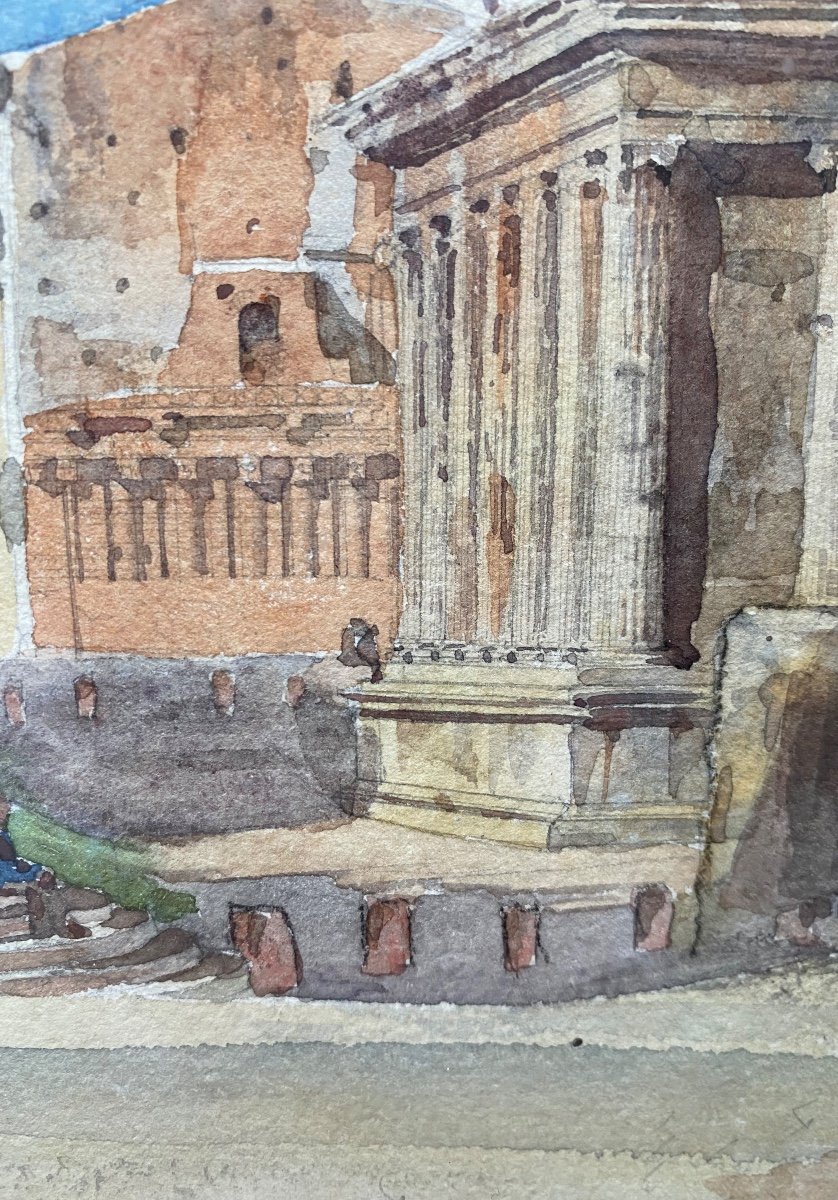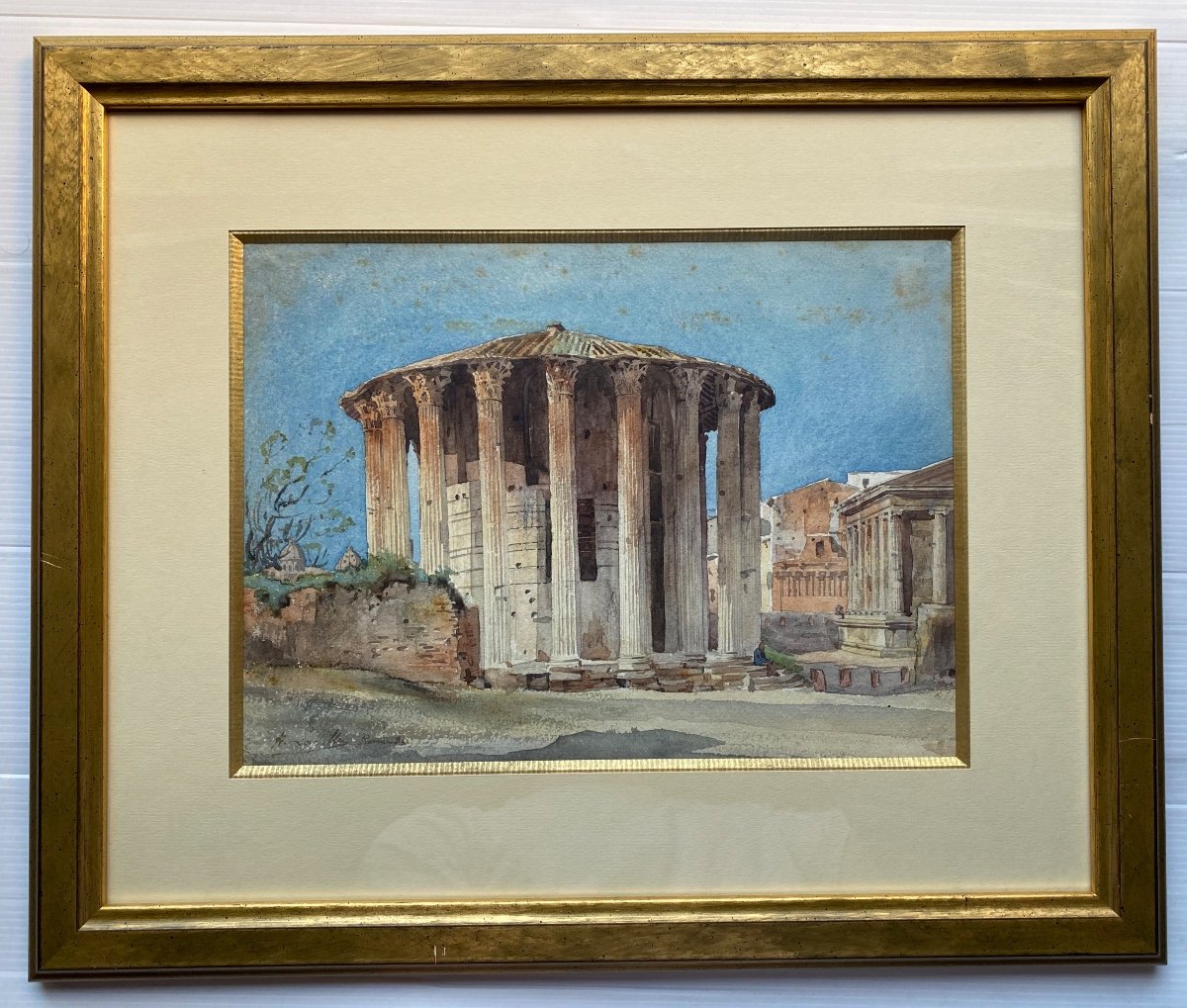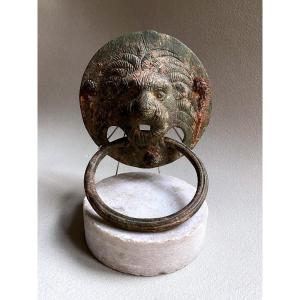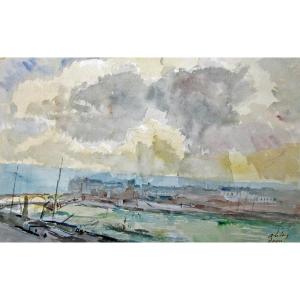Graphite, ink pen and watercolor on paper
32 x 23 cm
in a 51 x 42 frame.
Condition: Fresh and warm colors, some pitting in the sky imperceptible at one meter, no effect of insolation, good state of conservation, very beautiful rendering of the architecture of the ruins and the colors.
The subject: The temple of Hercules Olivarius, sometimes identified as the temple of Hercules Victor, is a round temple dating from the Roman Republic (end of the 2nd century BC), built on the forum Boarium in Rome. In modern times, it is located in the western part of the piazza della Bocca della Verità, integrated into a public garden where the temple of Portunus is also located. It is the oldest monument in the city built almost entirely of marble that has been preserved until contemporary times. It owes its remarkable conservation to its transformation into a church in the Middle Ages; it was restored to its ancient form in the 19th century like other Roman monuments. Identified for a long time and wrongly as a temple dedicated to Vesta because of its circular shape, it was recognized in the 20th century as dedicated to Hercules Olivarius. The last restoration campaign concerning it took place from 1996 to 1998.
The artist: Louis-Henri Laffillée, or Henri Laffillée (1859-1947) is a French architect, chief architect of historical monuments and diocesan architect. Henri Laffillée was a student at the École des Beaux-Arts, in the class of 1876. He was a student of Charles Laisné and Léon Ginain. During his schooling, he received the 1st Rougevin Prize, the Chaudesaignes Prize. He graduated from the school in 1885. In 1879, he was appointed inspector attached to the works of the cathedral of Reims, a position he held until at least 1885. He joined the Service of Historical Monuments in 1890. He made numerous surveys of mural paintings for the Commission of Historical Monuments. He was appointed chief architect of historical monuments in 1898. He was responsible for the historical monuments of Lozère, Sarthe, the district of Sceaux, the Rhône, the Loire, the Ain and the Sainte-Chapelle. He participated in the restoration of the Château des Milandes.




























 Le Magazine de PROANTIC
Le Magazine de PROANTIC TRÉSORS Magazine
TRÉSORS Magazine Rivista Artiquariato
Rivista Artiquariato
